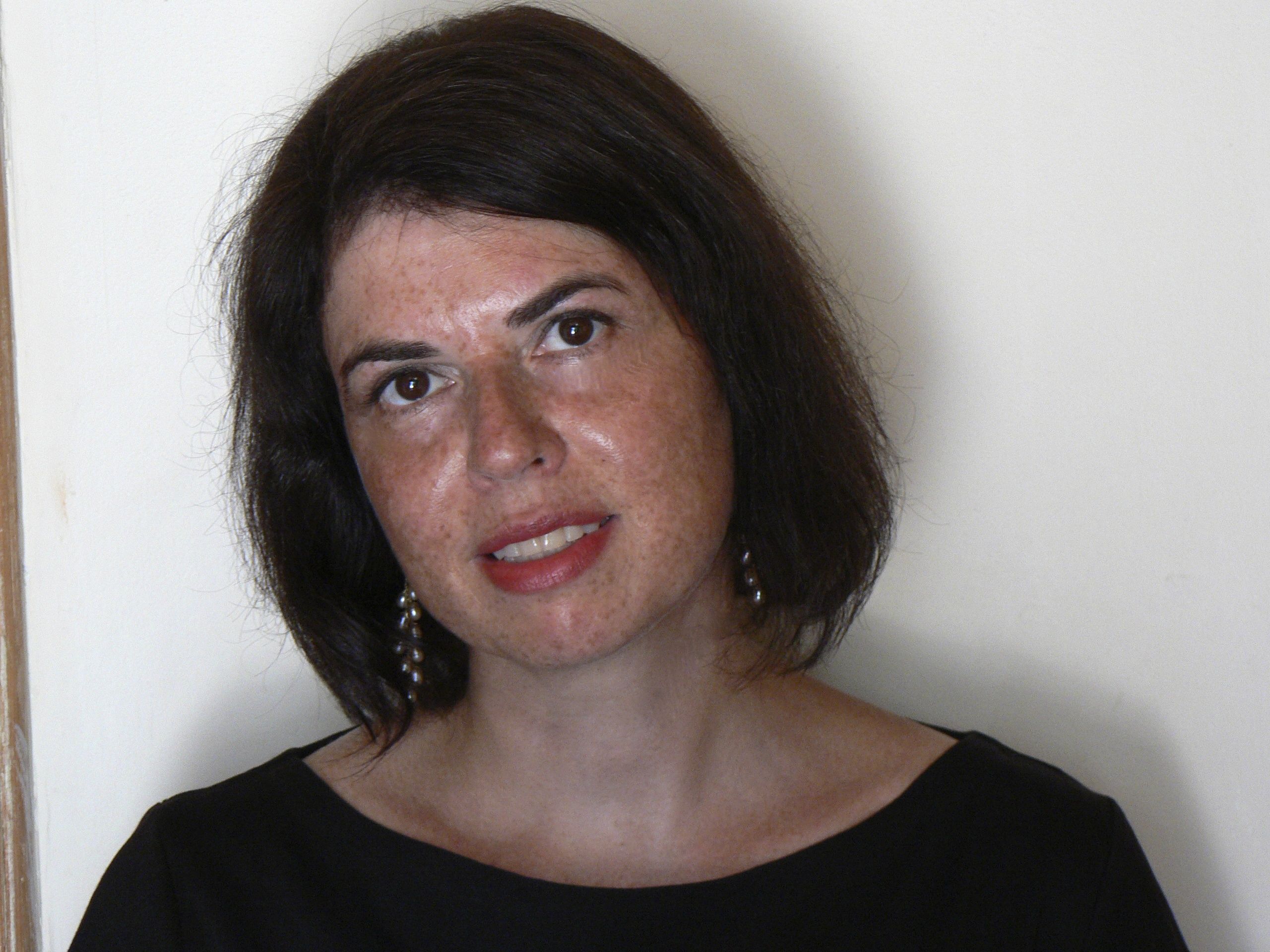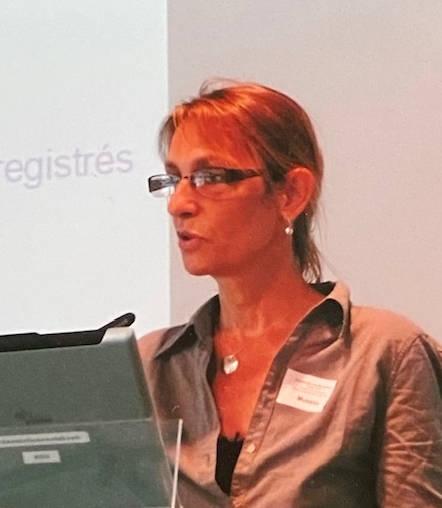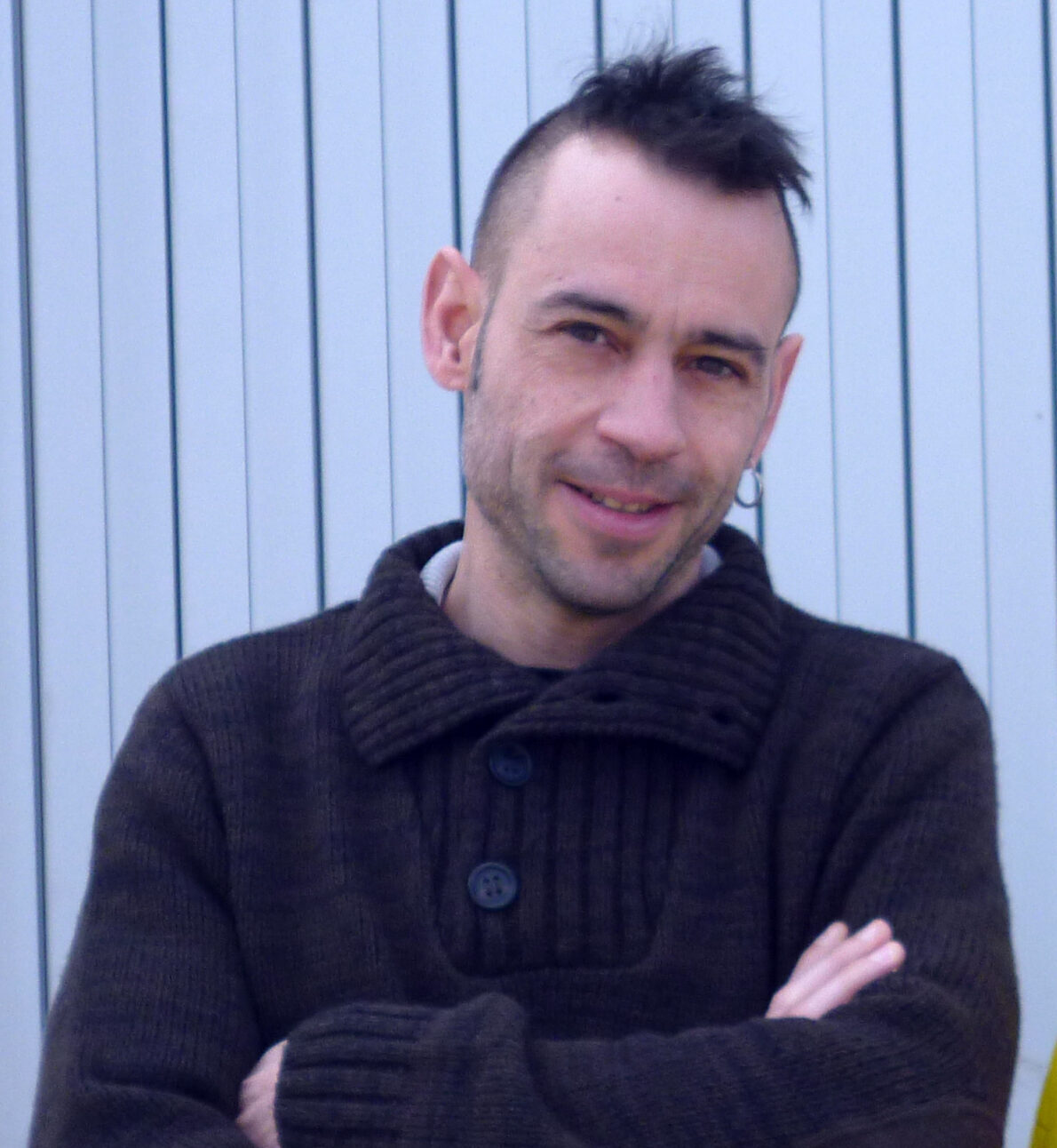In this interview that the head of the INAthèque granted to Culture Media Lab, she talks about the MIPs, the innovative educational modules that the INA has set up with Paris-Nanterre University. Drawing on the experiments conducted for several years by students in contact with the institution’s tools and archives, the INA will soon open its own Lab.
Can you introduce yourself and the INAthèque?
I am Claude Mussou. I am in charge of the INAthèque. The INAthèque is the INA service that makes the INA’s collections available for research purposes, covering the entire perimeter of the collections, i.e. radio, television and the Web. This covers almost the entire existence of each of the media: radio since the 1930s, television since the 1950s, and the Web since the early 2000s. By their nature, but also in number and mass, it is an extremely important sum of contents which allows longitudinal analyses on the media treatment of events or social realities. We accompany researchers and students in their scientific exploitation, by proposing, in addition to access, a diversity of tools. What we are organizing with the DICEN-IdF laboratory and in particular with the researchers of the Culture Media Lab is part of this dynamic of support and development of new research practices based on the tools and possibilities offered by digital technologies.
There is a collaboration between the University of Paris Nanterre and the INAthèque around the MIP, the Innovative Pedagogical Modules of the EUR ArTEc. Can you explain to us what these MIPs consist of?
The MIPs are educational modules that are embodied in Data Sprints, a collaborative process that is constrained by space and time. The ambition, around an identified theme, is to build a corpus of data from our radio, TV and Web collections. INA documentalists construct these data sets, which are then extracted from INA databases, according to the theme chosen with the teachers of Paris-Nanterre (the imagery of computers, the body, European construction, etc.). The students, divided into groups, analyze this data and apply a certain number of digital humanities-oriented treatments to it. They use excavation tools and visualization tools that make it possible to see more clearly the salient features, or even the gaps, in these massive data sets. INA’s research engineers also apply to some of these corpuses and prior to the event, search, visualization or transcription processes that they have developed. And then, in a short time (one week), the groups organize themselves to make these data sets “speak” from the treatments they have applied during the sprint. They finally produce analyses and a report on the last day of the sprint. This is our third year of partnership. This year, in connection with the French Presidency of the European Union and in collaboration with the leaders of an ANR project on media representations of Europe, the theme was Europe.
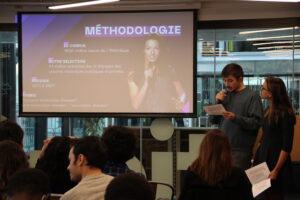
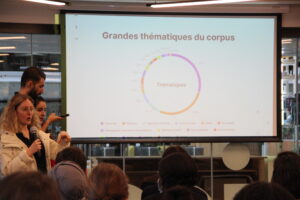
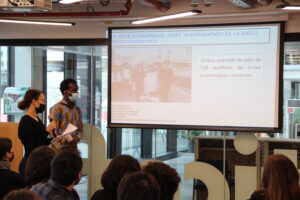
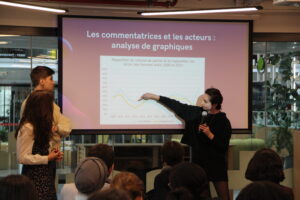
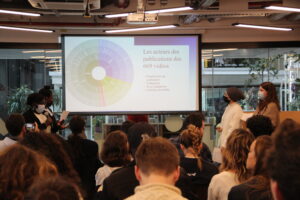
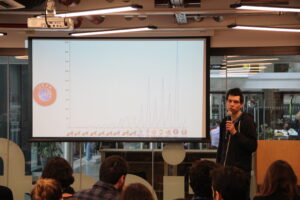
How did this collaboration come about?
This project started when I was in charge of the Web archives at INA. Marta Severo, who co-directs the DICEN-IdF, was one of the first researchers to be interested in the INA’s Web archives. It is indeed our vocation at the lNAthèque to promote scientific uses, but also to accompany teacher-researchers in their pedagogical practices. It is from this meeting and from our discussions that the idea of offering this module to students was born.
Within the framework of this partnership, what are the archives and tools that the INAthèque offers?
In terms of archives, we are talking about the complete perimeter of radio, television, and the Web, and this, since the origin of each of the media: 22 million hours of radio and television, 60 million documentary records, 118 billion archived Web URLs, and almost 3 billion publications of social network accounts. As for the tools, they are the historical ones like those allowing to constitute corpuses, to perform statistical analysis which offer the possibility to build one’s own database from the globality of the collections, they are also tools for navigation in audio-video streams, annotation tools… Within the framework of the MIP, we have inaugurated a LAB approach, with the possibility of exploring and experimenting with tools that have not yet been proposed in a situation of support for social science scientific practices at the INAthèque. I am thinking, for example, of very specific search tools such as those developed by David Doukhan at INA, which allow us to distinguish between male and female speech, or between speech and music in audio streams, and also of tools that allow us to search for images and to recognize or build up a corpus of similar images, such as the Snoop tool co-developed by INRIA and INA. I am also thinking of tools that produce transcriptions to allow a textometric analysis of large corpus…
Strengthened by this collaboration on innovative pedagogical practices with the teachers of Paris-Nanterre, our ambition is now to offer a range of services and tools within a LAB that will allow us to accompany new practices, to instrument them with new tools of massive data exploration.
Why work with the University of Nanterre and its students?
The INA is a partner of the COMUE Université Paris Lumière, so there is obviously an institutional proximity. It is also in our DNA to work for research and to support pedagogical practices. Marta Severo’s pedagogical and research approaches are very innovative and, in this sense, this collaboration is very dynamic for the INAthèque.
What happens when students encounter your data and how have they transformed the selected corpus parts in your collections?
The result, and the whole process, from the constitution of data sets to their analysis, is very, very innovative with a stimulating experimental and exploratory dimension. It is also very lively, very animated, and therefore necessarily a bit different from the usual practices of libraries. The INAthèque is located on the garden level of the BNF, a place that is usually very quiet and calm. It’s a change, in a way, but for the better! The students all have more or less a quantitative-qualitative approach: they start with the quantitative and the analysis of data as a subject and then develop a more qualitative aspect. It’s extremely dynamic and joyful.


Can you tell us about a highlight of achievements you especially remember in recent years with MIPs?
We return the students’ work on a research notebook of the hypothesis platform (https://inatheque.hypotheses.org/25145). Last year, we accompanied a work on the body in the collections of the INA, and it was very rich. I remember a work on gender stereotypes in perfume advertisements through time, skilfully carried out, supported in particular by a speech and music detection tool. The group had identified that in their early days, advertisements – advertisements have been present in the collections since the beginning of their broadcast on French television in 1968 – on perfumes were abundantly enriched with spoken texts. And then, progressively, the spoken texts had given way to music. The whole thing was put into perspective by the group with an analysis of the evolution of the gendered look in perfume ads. I also remember the work on the analysis of the representations of the migratory flows in Europe by boats of migrants, with a focus on very interesting temporal ruptures.
The MIPs are reconducted for next year. What theme is planned and what do you expect?
The MIPs are indeed reconducted for next year on the theme of sport, in connection with the Paris2024 Olympic Games. This will undoubtedly be a turning point, as it will be the year of the launch of our LAB and a range of new services. What we have been experimenting with in the context of the MIPs will now be formalized, beyond the student audiences of ArTec and Paris Nanterre. The next DataSprint will coincide with the launch of these new services in a Lab at the INAthèque. This will be a great opportunity to highlight once again the dynamism of this initiative and the work of the students.
Link
See the page of the project :
MIP : Innovative Pedagogical Modules / Digital explorations of the INA archives
Mots-clés
Last news

